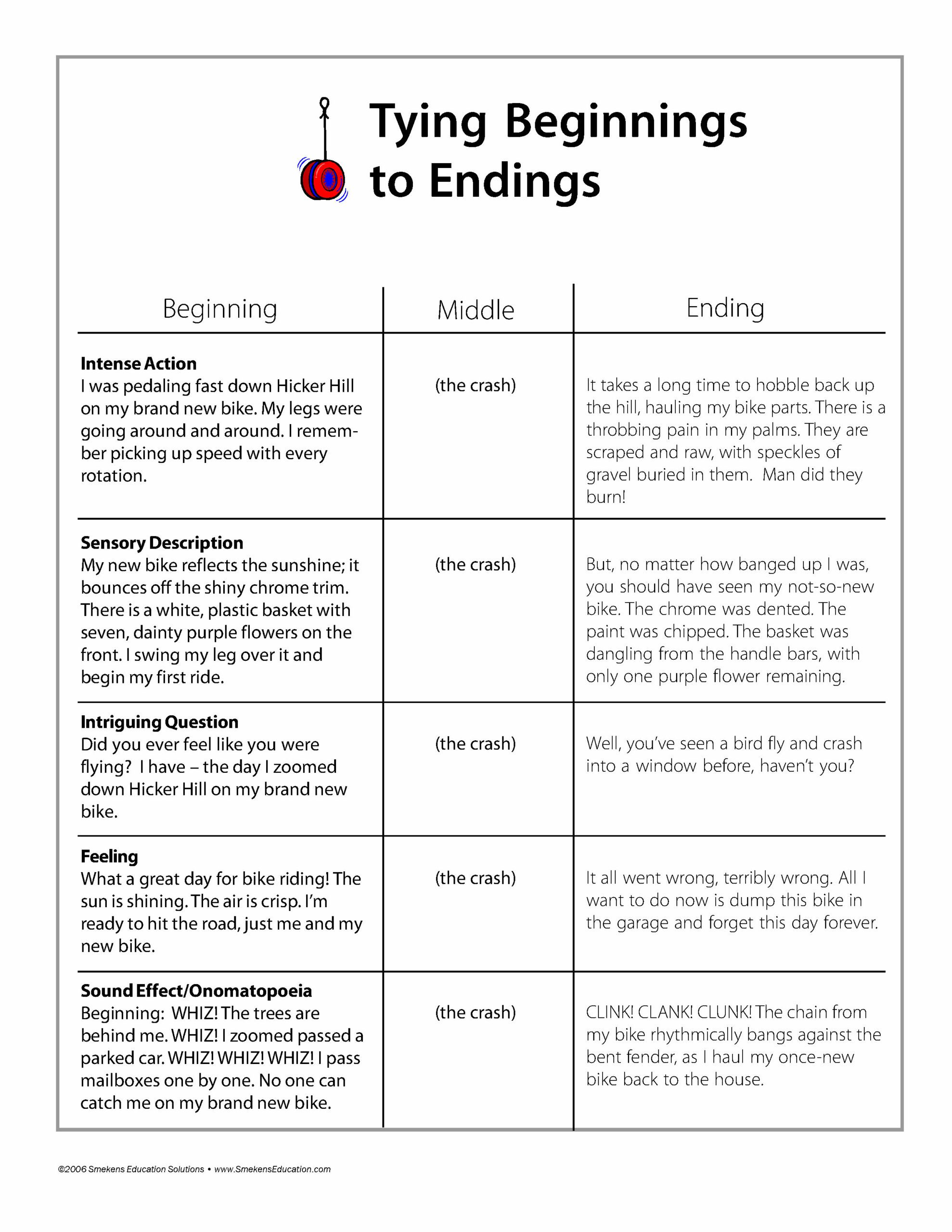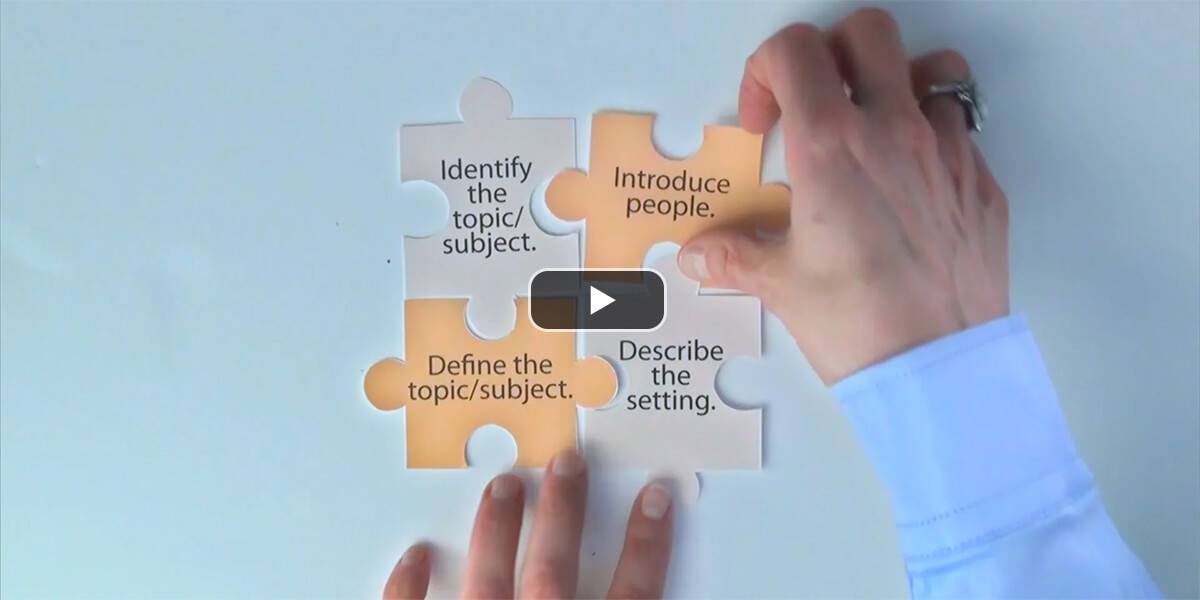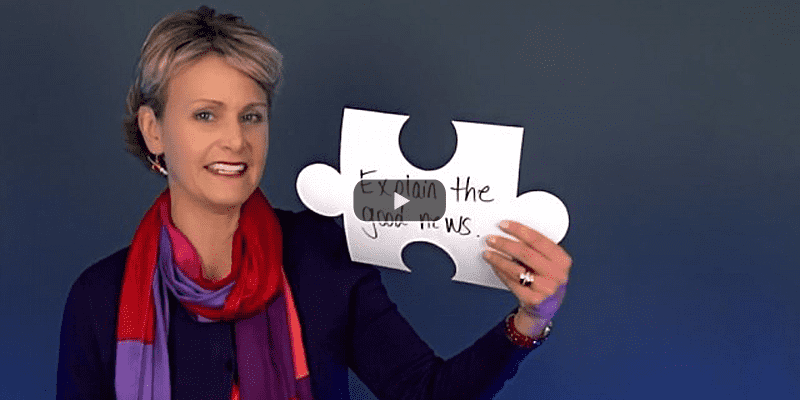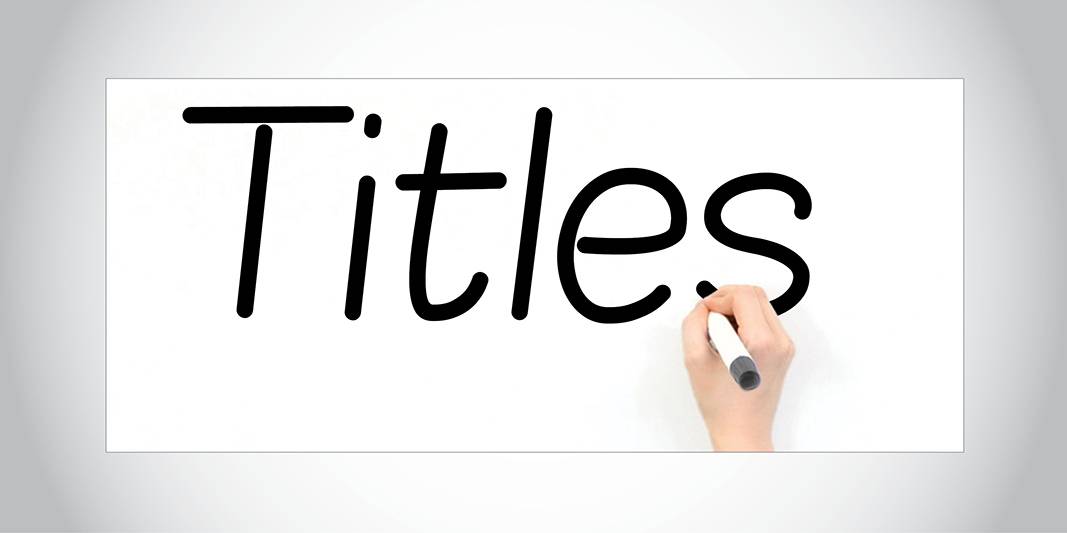Learning Center
writing
Practice beginnings & endings for state writing tests
may 4, 2023
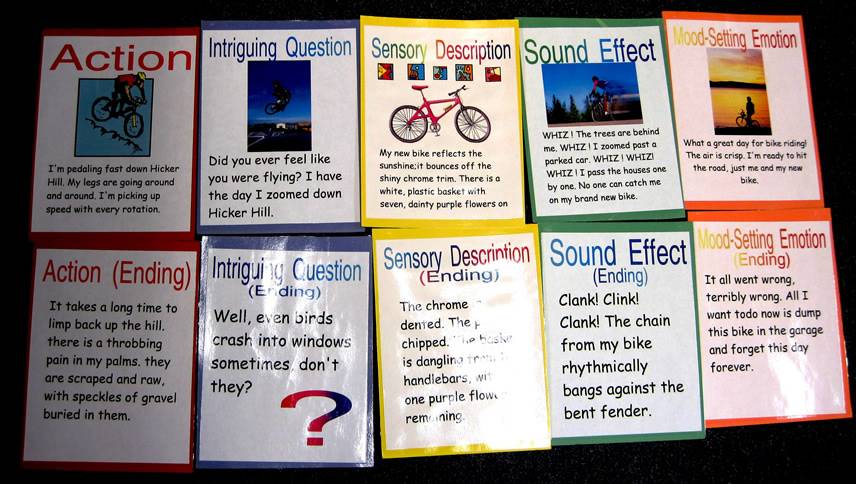
Standardized tests require that students respond to write-about-reading prompts. Knowing that, making a plan for the year is important. The top two reasons students fall short of passing scores–their writing is too short and lacks development. (Check out 20 Ways to Add Details.)
Let’s dive into the second most common reason students don’t pass–their writing lacks cohesiveness or completeness. In other words, they don’t have the 3-part combination including a beginning, middle, and end. They may have a beginning (or hook sentence), but after developing the middle, the piece just stops with a canned one-liner, like “The End” or “That’s all I know. Hope you liked my story,” or “Good-bye,” or “Thank you for reading this.”
After studying passing-score expectations, it is clear that there is a high expectation for the trait of organization. The piece must have evidence of a beginning, middle, and ending.
If your writers are not habitually writing beginnings and endings for their middles, it’s time to make that a specific focus of instruction.
Teach the beginning & ending as one component, not two separate ones. Target beginnings and endings as a single unit. Offer students a structure for creating beginnings and endings. One idea is to encourage them to use the same type of beginning and ending. For example, if the writing begins with action, it can end with action. If it starts with a sound effect, it can end with a sound effect. If it begins with sensory description, then it can end with sensory description.
Describe this as the yo-yo effect. Releasing the yo-yo represents the beginning. The spinning at the bottom of the string represents the middle. And the yo-yo spiraling back up to the user’s hand represents the ending. However you start, you can end. However you send the yo-yo down, bring it back up the same way.
To help students get some practice with this concept, start by sharing an oral story about a bike crash you experienced:
I was riding my new bike faster and faster. Then, all of a sudden, my wheel hit a pothole and I went flying. End over end I somersaulted in the air. When I touched down again, I didn’t just crash. I slid. I skid. I skimmed across the road. When I came to a stop, my elbows and knees were bleeding. My hands hurt.
Consider the above to be the “middle” of a piece of writing. Use this same “middle” over and over, while orally reciting several different beginning/ending combinations. Some examples might include:
1. Intense Action
Beginning: I was pedaling fast down Hicker Hill on my brand new bike. My legs were going around and around. I remember picking up speed with every rotation.
Middle: Reference the crash.
Ending: It took a long time to hobble back up the hill, hauling my bike parts. There was a throbbing pain in my palms. They were scraped and raw, with speckles of gravel buried in them. Man, did they burn!
2. Sensory Description
Beginning: My new bike reflected the sunshine; it bounced off the shiny chrome trim. There was a white, plastic basket with seven, dainty purple flowers on the front. I swung my leg over it and began my first ride.
Middle: Reference the crash.
Ending: But, no matter how banged up I was, you should have seen my not-so-new bike. The chrome was dented. The paint was chipped. The basket was dangling from the handlebars, with only one purple flower remaining.
3. Intriguing Question
Beginning: Did you ever feel like you were flying? I have–the day I zoomed down Hicker Hill on my brand new bike.
Middle: Reference the crash.
Ending: Well, all I can say is you’ve seen a bird fly and crash into a window before, haven’t you?
4. Mood-Setting Emotion
Beginning: What a great day for bike riding! The sun was shining. The air was crisp. I was ready to hit the road, just me and my new bike.
Middle: Reference the crash.
Ending: It all went wrong, terribly wrong. All I want to do now is dump this bike in the garage and forget this day forever.
5. Sound Effect/Onomatopoeia
Beginning: WHIZ! The trees were behind me. WHIZ! I zoomed past a parked car. WHIZ! WHIZ! WHIZ! I passed mailboxes one by one. No one could catch me on my brand new bike.
Middle: Reference the crash.
Ending: CLINK! CLANK! CLUNK! The chain from my bike rhythmically banged against the bent fender, as I hauled my once-new bike back to the house.
Note: You don’t need many details about the crash itself because the “middle” isn’t the important part of this lesson. The key is that students hear patterned beginnings and endings. Download these examples.
The greatest advantage to such a technique is that students are immediately thinking of their ending before they even write the beginning. They know where their pieces are going. Producing a “meaningful whole” with a beginning, middle, and end is essential for on-demand writing.
TIP: Writing coach Diane Burns at Aylesworth Elementary (Portage, IN) put several beginning/ending combinations from the bike crash example on laminated mini-posters for her teachers. Classroom teachers continue referencing the different types, giving their students opportunities to practice different combinations for their own writing topics. Download photo.
This can be incorporated into primary-grade writing, too. This concept of tying the beginning and ending together is applicable even for young writers. Although it may not be a multi-sentence beginning with a multi-sentence ending, a single sentence is definitely doable. Check out these two examples by Bright Elementary School (Bright, IN) first graders in Linda Schmidt’s class. They are fabulous! Download student examples.
Give students opportunities to play with the yo-yo effect in the next couple weeks. Here are a couple in-class activities that will target this beginning/ending combination:
- Provide students with the “middle” from any anchor paper you have in your collection. (Delete the beginning and ending, if there is one.) Have students work in pairs/groups to write a beginning and ending for that piece. You may suggest they write multiple beginning-ending combinations for the same “middle.” Have them pick their favorites. NOTE: Make sure your anchor paper “middles” are in a variety of genres. Have them experiment with narrative, persuasive, expository, how-to, compare-contrast, etc. Target the genres your grade level tends to be assigned on your state writing prompt.
- Tell students to pull out any previous writing from earlier in the year. Using sticky notes, have students put one at the top of their writing and one at the bottom/end of their writing. Have them try one of the yo-yo combinations. They should write their new beginning on the first sticky note and their new ending on the second sticky note. Do this over and over for different pieces from their writers’ notebooks.
- Provide students with a variety of writing prompts. Have them decode the prompt and create their pre-write, but then only write the beginning and ending to the piece. Do this over and over for a variety of prompts. This gives them lots of practice with the yo-yo concept, without the burnout that comes with writing out all those “middles.”
- All three of the above activities could be accomplished through oral writing. Students could brainstorm and say out loud their beginnings and endings. They wouldn’t have to necessarily write them down. If students can’t say a beginning and ending, they can’t write it anyway. This could be a whole-class oral exercise. The advantage to doing it orally is that you can get through more examples faster. And, if your trying to refresh their memories right before the test, you want to give them as much specific practice time as possible.
Teacher comment:
Jackie Bard, 8th grade ELA teacher at Bellmont Middle School (Decatur, IN) shared:
Today I collected a 5-paragraph paper from my students. They all seemed to struggle with the intro and conclusion. I used your story of the bike crash in all 5 of my classes. I challenged them to use an onomatopoeia in the intro as well as the conclusion. The results were amazing!

